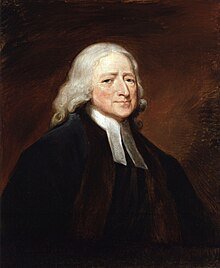The 18th century marked a period of significant religious and social upheaval in England. Amid the backdrop of the Enlightenment, characterized by intellectual and philosophical advancements, the religious landscape was experiencing a notable transformation. John Wesley, born on June 28, 1703, in Epworth, Lincolnshire, was poised to become a pivotal figure in this era of spiritual awakening.
Wesley was raised in a devout Anglican household, receiving a rigorous education that included studies at the Charterhouse School and later at Christ Church, Oxford. His ordination as an Anglican minister in 1728 was a stepping stone towards his broader mission. However, the Anglican Church of that time was often criticized for its perceived spiritual stagnation and lack of fervor. This environment was ripe for the emergence of a revivalist movement.
The broader religious environment in England during the 18th century was marked by a sense of complacency within the established Church. Many parishioners were disengaged, and church attendance was on the decline. This period also saw the rise of Deism and secularism, which further contributed to the spiritual malaise. Amid this backdrop, the need for a revival was palpable, and John Wesley’s eventual conversion experience on May 24, 1738, would become a cornerstone for this revival.
Wesley’s journey towards his transformative experience was documented meticulously through his letters and diary entries. These historical records provide invaluable insights into his internal struggles and quest for spiritual assurance. For instance, his correspondence with his brother Charles Wesley and colleague George Whitefield reveals the depth of his spiritual turmoil and the eventual clarity he achieved. This period of introspection and eventual enlightenment laid the groundwork for what would become the Methodist movement.
External references, such as scholarly articles and historical documents, further corroborate the significance of this era. For those interested in a deeper dive, the works of historians like Henry D. Rack and Richard P. Heitzenrater offer detailed accounts of Wesley’s life and the broader religious trends of the 18th century. These sources provide a comprehensive understanding of the conditions that led to the rise of Methodism, contextualizing John Wesley’s pivotal role in this spiritual renaissance.
The Aldersgate Experience: A Turning Point in Wesley’s Life
On the evening of May 24th, 1738, John Wesley attended a small religious meeting on Aldersgate Street in London. This gathering, which would become a cornerstone in the history of Methodism, marked a significant turning point in Wesley’s life. As Wesley detailed in his journal, he was feeling particularly despondent and seeking spiritual solace. During the meeting, a passage from Martin Luther’s preface to the Epistle to the Romans was read aloud, and it was at this moment that Wesley experienced a profound personal transformation.
Wesley described this pivotal event with the now-famous phrase, “I felt my heart strangely warmed.” He wrote in his journal, “I felt I did trust in Christ, Christ alone for salvation; and an assurance was given me that He had taken away my sins, even mine, and saved me from the law of sin and death.” This experience of assurance and deepened faith was a critical moment for Wesley, setting the stage for his future endeavors in ministry and evangelism.
Eyewitness accounts and Wesley’s own reflections provide a vivid picture of the Aldersgate experience. Many who were present noted Wesley’s transformation, observing a newfound zeal and conviction in his faith. This conversion did not merely alter Wesley’s personal spiritual journey but also had profound implications for his ministry. Following this event, Wesley embarked on a mission of enthusiastic evangelism, traveling extensively to preach and establish Methodist societies.
The immediate and long-term effects of the Aldersgate experience were far-reaching. Wesley’s renewed vigor and passionate preaching attracted numerous followers, leading to the formation of Methodist societies that emphasized disciplined Christian living and communal support. These societies eventually coalesced into the Methodist movement, which continues to be a significant Christian denomination today.
For those interested in delving deeper into this transformative moment, primary sources such as Wesley’s journal and letters offer invaluable insights. They not only capture the emotional intensity of the 24th May 1738: John Wesley’s conversion but also provide a detailed account of how this experience reshaped his life’s work and contributed to the birth of Methodism.

